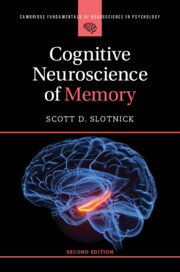Refine search
Actions for selected content:
230 results
Bilateral stimulation: differential effects in EEG and peripheral physiology
-
- Journal:
- BJPsych Open / Volume 11 / Issue 6 / November 2025
- Published online by Cambridge University Press:
- 13 November 2025, e278
-
- Article
-
- You have access
- Open access
- HTML
- Export citation
Educational background’s impact on designers’ ideation: brain, behavior, and stress
-
- Article
-
- You have access
- Open access
- HTML
- Export citation
Chapter 26 - Neural Evidence for Cultural Variation in Emotion
- from Section VI - Social Emotions
-
-
- Book:
- The Cambridge Handbook of Human Affective Neuroscience
- Published online:
- 16 September 2025
- Print publication:
- 02 October 2025, pp 523-543
-
- Chapter
- Export citation
Individual differences in main idea identification: An EEG study of monolinguals and bilinguals with dyslexia
-
- Journal:
- Bilingualism: Language and Cognition , First View
- Published online by Cambridge University Press:
- 15 September 2025, pp. 1-13
-
- Article
-
- You have access
- Open access
- HTML
- Export citation
Brain dynamics of crosslinguistic interference resolution in Spanish–English bilinguals with and without aphasia
-
- Journal:
- Bilingualism: Language and Cognition , First View
- Published online by Cambridge University Press:
- 05 September 2025, pp. 1-19
-
- Article
-
- You have access
- Open access
- HTML
- Export citation
Impaired emotional memory dissipation in insomnia disorder
-
- Journal:
- Psychological Medicine / Volume 55 / 2025
- Published online by Cambridge University Press:
- 01 September 2025, e260
-
- Article
-
- You have access
- Open access
- HTML
- Export citation
6 - Clinical, Laboratory, and Neuroimaging Assessments Relevant for the Diagnostic Work-Up of Catatonia
-
- Book:
- Catatonia
- Published online:
- 26 July 2025
- Print publication:
- 14 August 2025, pp 79-94
-
- Chapter
- Export citation
Chapter 3.2 - Biological Signals and Their Measurement
- from Sec 3 - Physics
-
- Book:
- Dr Podcast Scripts for the Primary FRCA
- Published online:
- 19 June 2025
- Print publication:
- 03 July 2025, pp 307-318
-
- Chapter
- Export citation

Cognitive Neuroscience of Memory
-
- Published online:
- 12 June 2025
- Print publication:
- 30 January 2025
-
- Textbook
- Export citation
3 - Investigating the Brain
-
- Book:
- Neuroscience of Attention
- Published online:
- 02 May 2025
- Print publication:
- 22 May 2025, pp 58-90
-
- Chapter
- Export citation
Hyperkinetic Lingual Movements Resulting from Epileptogenesis: A 13-Patient Cohort Study on Lingual Seizures
-
- Journal:
- Canadian Journal of Neurological Sciences , First View
- Published online by Cambridge University Press:
- 14 April 2025, pp. 1-11
-
- Article
-
- You have access
- Open access
- HTML
- Export citation
Chapter Two - Methods of Cognitive Neuroscience
-
- Book:
- The Neuroscience of Language
- Published online:
- 17 April 2025
- Print publication:
- 10 April 2025, pp 16-41
-
- Chapter
- Export citation
Chapter 4 - Structural and Functional Neuroimaging in Psychiatry
-
-
- Book:
- Essential Neuroscience for Psychiatrists
- Published online:
- 12 March 2025
- Print publication:
- 20 March 2025, pp 147-173
-
- Chapter
- Export citation
Chapter 18 - Wetware
- from Part IV - Neurobiological Theories
-
- Book:
- Looking Ahead
- Published online:
- 20 March 2025
- Print publication:
- 06 March 2025, pp 201-207
-
- Chapter
- Export citation
Processing syntactic violations in the non-native language: different behavioural and neural correlates as a function of typological similarity?
-
- Journal:
- Bilingualism: Language and Cognition , First View
- Published online by Cambridge University Press:
- 28 February 2025, pp. 1-23
-
- Article
-
- You have access
- Open access
- HTML
- Export citation
Chapter 57 - Clinical Neurophysiology in Movement Disorders
- from Section 5: - Objectifying Movement Disorders
-
-
- Book:
- International Compendium of Movement Disorders
- Published online:
- 07 January 2025
- Print publication:
- 06 February 2025, pp 704-715
-
- Chapter
- Export citation
Chapter Eight - Working Memory
-
- Book:
- Cognitive Neuroscience of Memory
- Published online:
- 12 June 2025
- Print publication:
- 30 January 2025, pp 180-207
-
- Chapter
- Export citation
Chapter Four - Brain Timing Associated with Long-Term Memory
-
- Book:
- Cognitive Neuroscience of Memory
- Published online:
- 12 June 2025
- Print publication:
- 30 January 2025, pp 79-105
-
- Chapter
- Export citation
EEG Training in the Context of Competency-Based Learning: When Is Enough, Actually Enough?
-
- Journal:
- Canadian Journal of Neurological Sciences / Volume 52 / Issue 6 / November 2025
- Published online by Cambridge University Press:
- 24 January 2025, pp. 883-884
-
- Article
- Export citation
